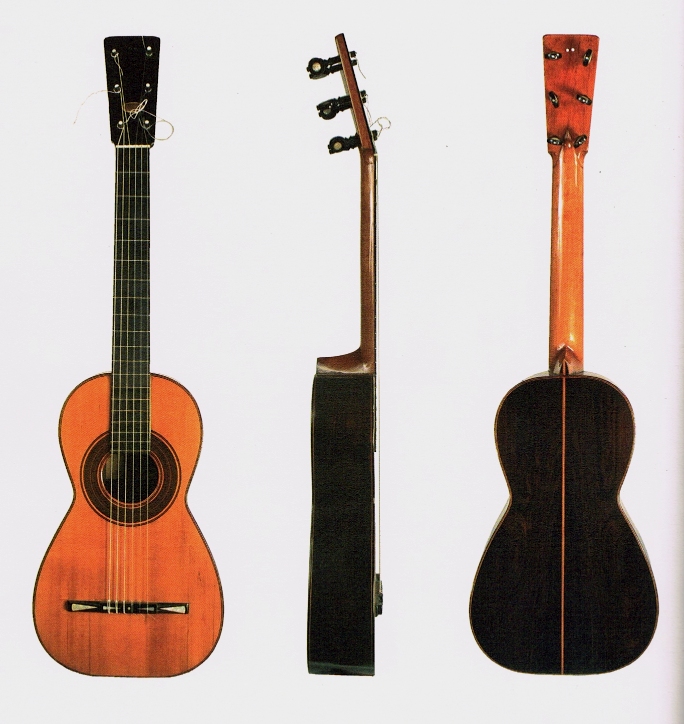The vast majority of the 220 guitars I have made have been the concert model which I have developed over a 25 year period but these days I am making more and more copies of historic instruments. This all started when I was studying with José Ángel Chacón in Málaga and was able to examine guitars by Torres, Antonio de Lorca, Barbero and Vicente Arias. The first copy I made was Antonio de Lorca Garcia based on my drawings and examinations of the instrument. 
When I became interested in flamenco guitars I used my knowledge of Barbero’s work to modify my concert model to respond better to the flamenco player’s needs. I have never made a copy per se of Barbero but have had great results with the bracing and thicknesses he used in at least one of his guitars. Read a little more about flamencos here.
A turning point in my career was meeting Carles Trepat and hearing him play his 1892 Torres. This guitar too I was able to examine and photograph; this time in the company of my teacher Rolf Eichinger. Rolf was a great connoisseur of historic guitars and had developed his own methods for examining guitars with a mind to discover the original maker’s working techniques and design ideas. With his advice, the first copies of this Torres exceeded my expectations and sold very quickly. The fact that Javier Riba, among others, concertizes and records with one of my Torres has given this model a great reputation among guitarists. Without a doubt the invitation by the owners of “La Invencible” de Torres to copy that guitar is due to the reputation of my 1892 copies. The first “Invencible” copies will be available from Solera Flamenca this fall.
As historic guitars have crossed my bench for restorations and appraisals I have chosen a few that I have found particularily great and made copies of them. A Santos Hernández ex-Segovia which I examined for the spanish musicology journal Roseta has now become a part of my catalogue and the copies are finding favour among guitarists.
My teacher Rolf Eichinger used his experience of playing, buying and selling guitars and examing historic instruments to develop his own model and his guitars were sought after by spanish guitarists as well as those all over the world. I inherited some of his molds and jigs when he passed away and I finally made a copy of his 640 model last year. The response to that model was also very positive.
As you might imagine this interest in organology has its own justification and it allows me to change mindset and disconnect from the boredom of always building the same model. Now, if for whatever reason a particular guitar is not well received by potential clients it has to be crossed off the list. The guitar that generated the most interest of all the copies that I have made was that of Vicente Arias 1900. This is a double-back rosewood instrument which has survived in almost perfect condition to our day. The original was recorded for this cd. For some reason my copy was not a commercial success so I never made a second one.
